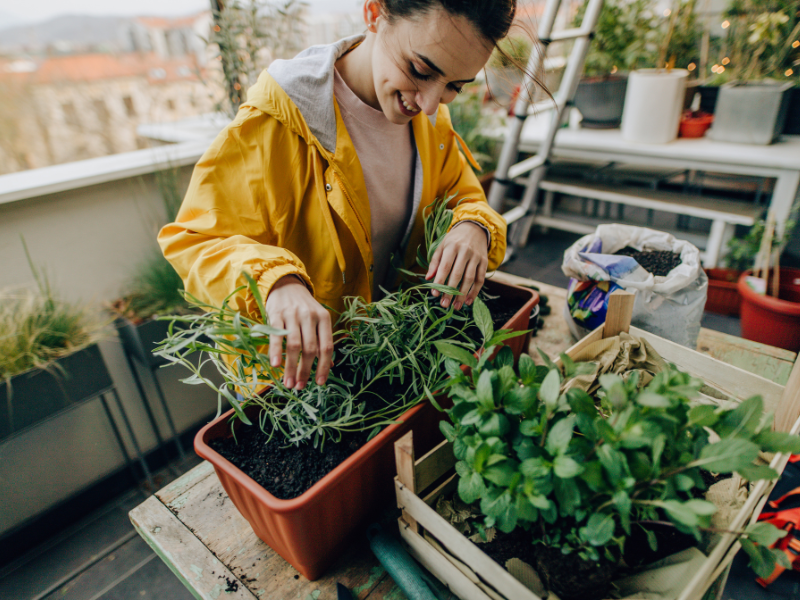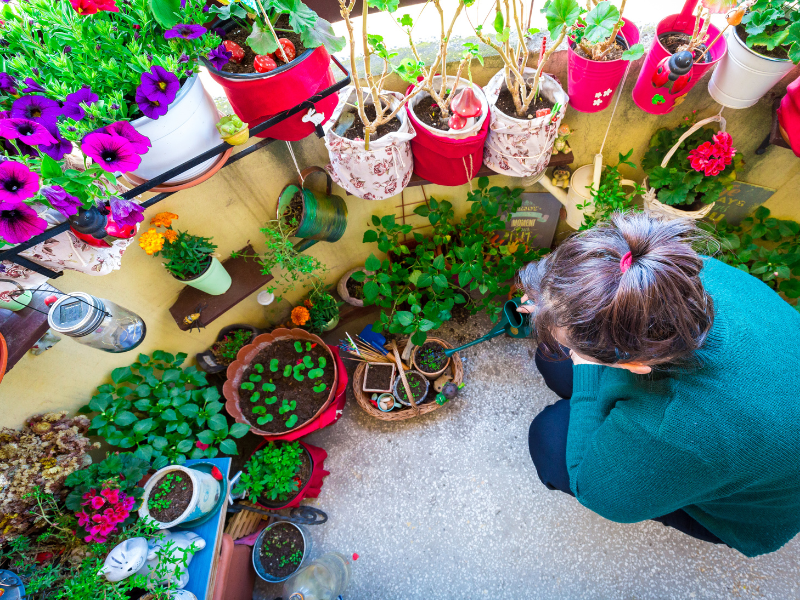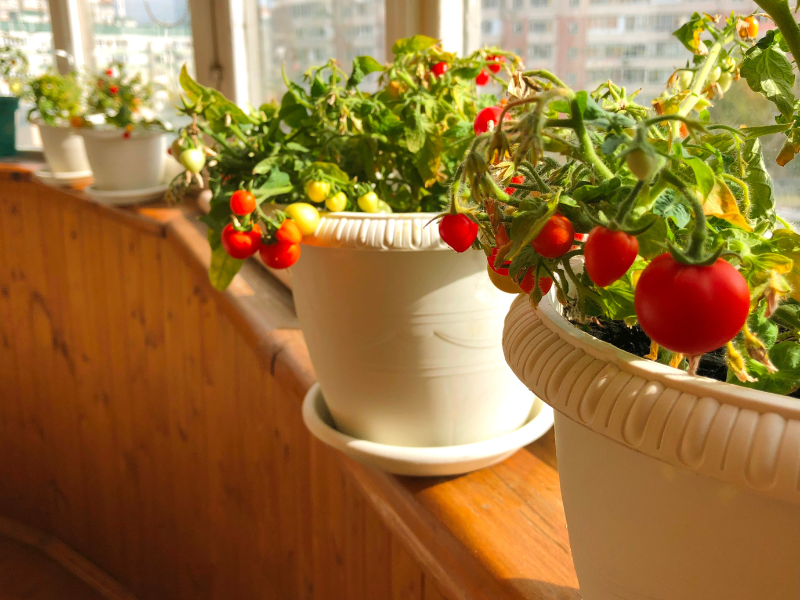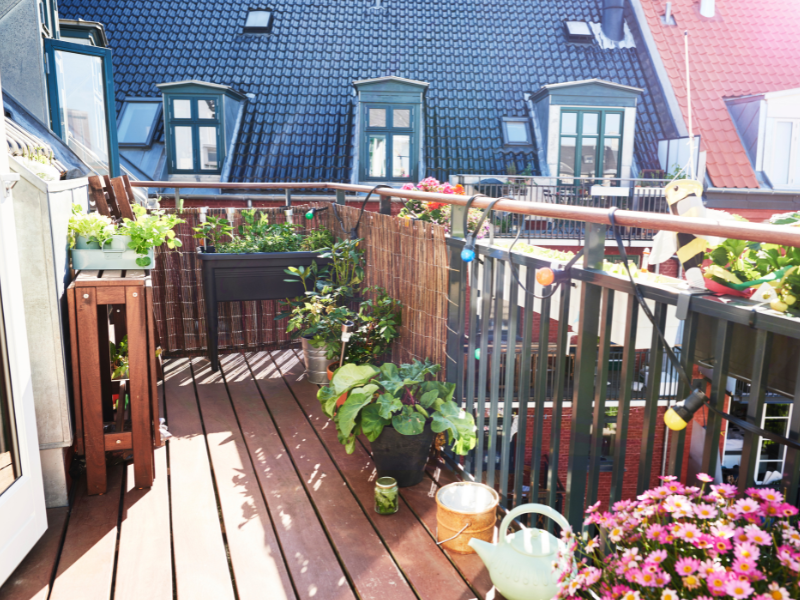With the weather warming and the sun shining, summer heralds the perfect time to indulge in gardening. For those in high-rise apartments, the idea of cultivating a lush garden terrace may seem like a pipe dream in a concrete jungle. But the reality is, urban gardening can thrive in the most unlikely spaces, including the balconies of city dwellers. In this beginner’s guide, we’ll explore the easiest vegetables you can grow, share practical tips for urban settings, and encourage sustainable living even for those living amidst the skyscrapers.
The Thriving World of Urban Gardening
Urban gardening offers a spectrum of benefits – from providing fresh ingredients for your kitchen to contributing to a healthier environment. Cultivating your greens can substantially reduce your carbon footprint, offering a way to consume more eco-consciously. Plus, there’s nothing quite like the satisfaction of growing your food.
In densely populated cities, access to fresh, pesticide-free produce can be limited and expensive. Urban gardening circumvents this issue, enhancing access to greenery and food with high nutritional value. With a bit of knowledge and resourcefulness, it’s possible to create a productive mini-oasis, even in the tightest of urban spaces.
Selecting the Right Vegetables for your Balcony Garden
The first step for your new gardening venture is selecting the right vegetables. Opt for those that won’t be too demanding and that can thrive in confined quarters. Here are some veggies that are known for their minimal care requirements and thrive in containers.
Easy-to-grow Vegetables Suitable for Beginners
1. Cherry Tomatoes: These plants love the sun and will reward you with small, sweet fruits all summer long.
2. Peppers: A range of peppers, from the milder bell varieties to spicy jalapeños, are well-suited for containers with a warm, sunny spot.
3. Radishes: Quick growing and rewarding for beginners, radishes are a great way to see early success in your gardening endeavours.
4. Salad Greens: Varieties of lettuce, spinach, and arugula are not only easy to grow but also provide a continuous, fresh harvest if managed well.
5. Herbs: While not typically considered a vegetable, herbs like basil, parsley, and chives are a must-have for any balcony ‘kitchen garden’ due to their ease of growth and frequent use in cooking.

Preparing for Your Balcony Vegetable Garden
Gathering the Necessary Tools and Supplies
Before you start planting, you’ll need to assemble the proper equipment. This includes:
Gardening Tools: Basic tools like a trowel, pruners, and gardening gloves are a good starting point.
Containers: Choose pots or grow bags that are appropriate for the size of the plant and have drainage holes.
Potting Soil: A high-quality potting mix is crucial for container gardening as it ensures good drainage and aeration.
Watering System: Whether it’s a simple watering can or a more advanced system, make sure you can easily and accurately water your plants.
With the right equipment, you’re well on your way to setting up a productive garden.

Step-by-Step Gardening Guide
Preparing the Balcony Space
Start by assessing your balcony’s microclimate — how much sun and wind does it receive, and when? Consider the available space and how to maximize it. Once you’ve measured and noted these details, it’s time to prepare the area.
Clean and Check: Clear any debris and ensure the balcony can support the weight of your containers. Check for leaks and perform any necessary maintenance.
Choose the Right Spot: Place your containers in areas that receive at least 6 hours of direct sunlight.
Arrange Containers: Position containers to allow easy access for watering and plant maintenance.
Planting Seeds or Seedlings
When planting, follow the instructions on your seed packaging or seedling trays. Make sure to:
Use Appropriate Soil: Fill the containers with the potting mix, leaving space for water.
Plant at the Right Depth: Bury seeds or seedlings to the depth recommended, normally around 2 to 3 times the diameter of the seed or the depth the plant was growing in a nursery tray.
Water Gently: After planting, water the soil thoroughly but gently to avoid displacing seeds or causing waterlogging.
Watering and Maintenance Tips
Regular watering is the key to a successful balcony garden. However, over-watering can be as damaging as under-watering. Here are some best practices: Skyline Grower supplies a whole range of easy garden irrigation systems that can be used for a variety of setups
Monitor Moisture Levels: Stick your finger into the soil to check if it’s dry an inch or two below the surface before watering.
Water Consistently: Different plants have different water needs, but a good rule of thumb is to water deeply when the soil is dry.
Fertilize Sparingly: Balcony gardens deplete nutrients more quickly, so use a liquid fertilizer every few weeks in addition to good soil from the start.
Maximizing Limited Space
Vertical Gardening Techniques
When gardening on a balcony, space is always at a premium. Vertical gardening increases your growing area and can also be aesthetically pleasing.
Trellises and Stakes: These provide support for plants that like to climb, such as tomatoes and peas.
Hanging Planters: These save even more space by utilizing the often-underused vertical footprint.
Companion Planting for Space Efficiency
Certain plants grow well together and can share the same container. This not only saves space but also promotes healthy growth by deterring pests and attracting pollinators.
Tomatoes and Basil: A classic combination that not only tastes great together but also encourages robust growth.
Carrots and Onions: These underground crops can grow in harmony in the same container.

Harvesting and Enjoying Your Produce
Signs of Readiness for Harvest
Each vegetable has its own cues for being ready to harvest. Generally, you want to gather crops when they reach a desired size and color.
Tomatoes: When they’re fully colored and slightly soft to the touch.
Radishes: Their red globe should be visible above the soil line and ready to taste.
Herbs: Snip off what you need when the plant is large enough to support it, but before it begins to flower.
Ideas for Using Homegrown Vegetables in Cooking
There’s a special harmony in using produce from your own garden in the kitchen.
Salads: Crisp lettuce and pungent arugula make wonderful salads straight from the garden.
Salsas: Fresh tomatoes and peppers can be combined with herbs for a summery salsa.
Pasta Dishes: Herbs and cherry tomatoes are the perfect addition to any pasta or spaghetti dish.
Conclusion
In conclusion, balcony gardening is a rewarding hobby that connects you to your food and to nature. It encourages sustainable living, teaching us about the cycle of life and the energy that goes into producing our food. With this guide, even the most inexperienced gardener can enjoy the bounty of fresh vegetables from their very own balcony. Start small, be patient, and enjoy the process. Your urban oasis awaits!



